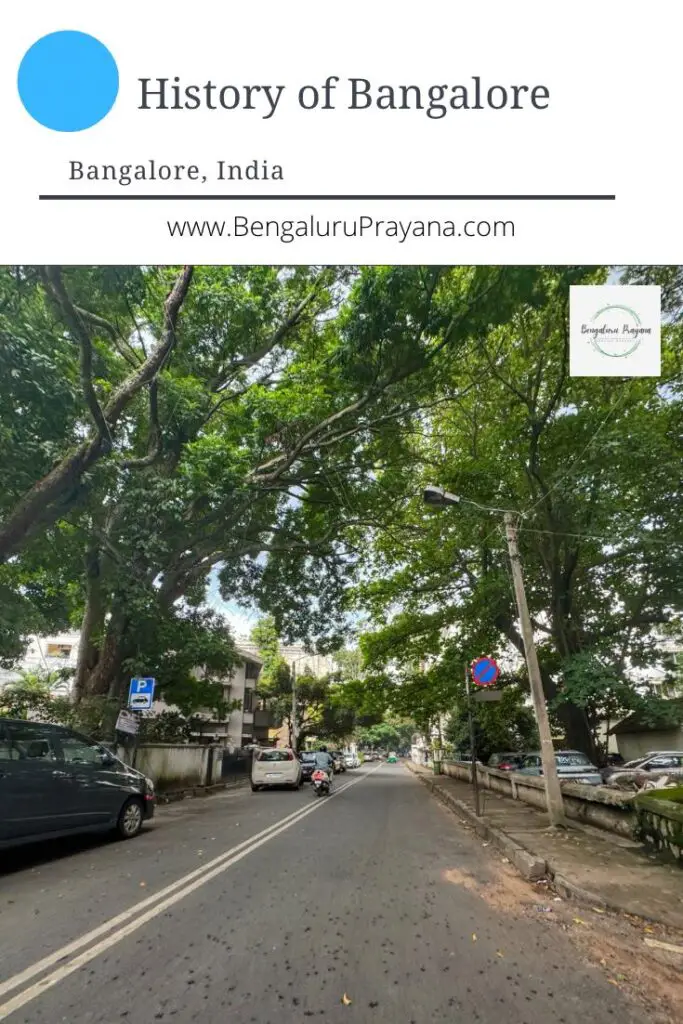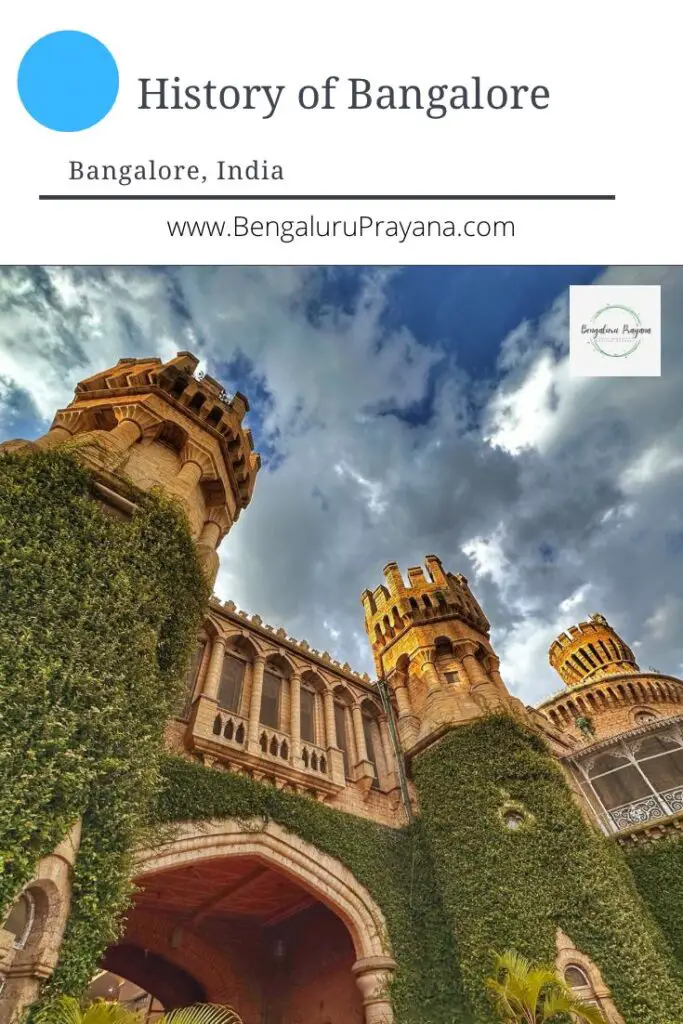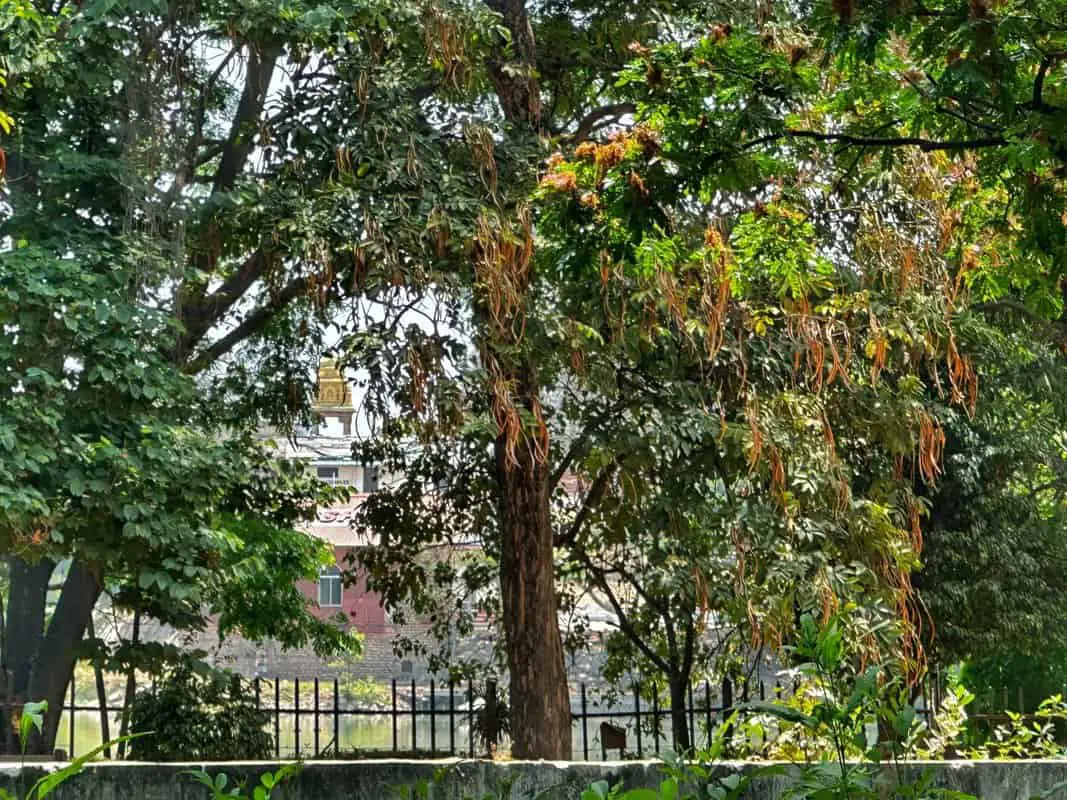Since moving from Sydney to Bangalore, I’ve been on a fascinating journey of rediscovering my home city. Bangalore is known for its vibrant lifestyle and greenery, and as the city of lakes, but there is so much more to uncover, especially when it comes to its history.
As I dive deeper into Bangalore’s past, I’ve stumbled upon several intriguing and sometimes puzzling facts that have made this learning process both exciting and challenging. Every day feels like a new lesson as I piece together different aspects of the city’s heritage and culture.
I want to share what I’ve learned about the rich history of Bangalore in this post. The city’s transformation from a modest settlement into the thriving metropolis it is today is nothing short of remarkable. Along the way, I’ll address some fascinating stories that have shaped this city, stories of rulers, battles, and cultural evolutions that have left a lasting impact on Bangalore.
Join me as I uncover the story behind Bangalore, a city that beautifully merges its ancient past with the bustling energy of modern life. Let’s explore the layers of history that make this garden city so unique. Irrespective of whether you are new to Bangalore or have lived here for years, I hope this post helps you see the city in a different light.
This article may contain affiliate links. For complete information, please see our affiliate disclaimer here.
About Bangalore/Bengaluru
Bangalore, or Bengaluru, is a cultural hub that blends tradition with modernity. As the capital of Karnataka, the city is a melting pot of diverse cultures, languages, and communities. Kannada, the local language, plays a significant role in shaping the city’s cultural identity, but English, Hindi, and other regional languages are widely spoken, reflecting Bangalore‘s cosmopolitan nature.
The city’s culture is deeply rooted in its rich history, with landmarks like the Bangalore Palace and Tipu Sultan’s Summer Palace as reminders of its royal past. Local festivals such as Karaga, Ugadi, and Dasara are celebrated enthusiastically, showcasing the region’s traditional rituals and local customs. At the same time, Bangalore is known for embracing contemporary art, music, and theatre, with vibrant spaces like Ranga Shankara and the National Gallery of Modern Art highlighting this cultural evolution.
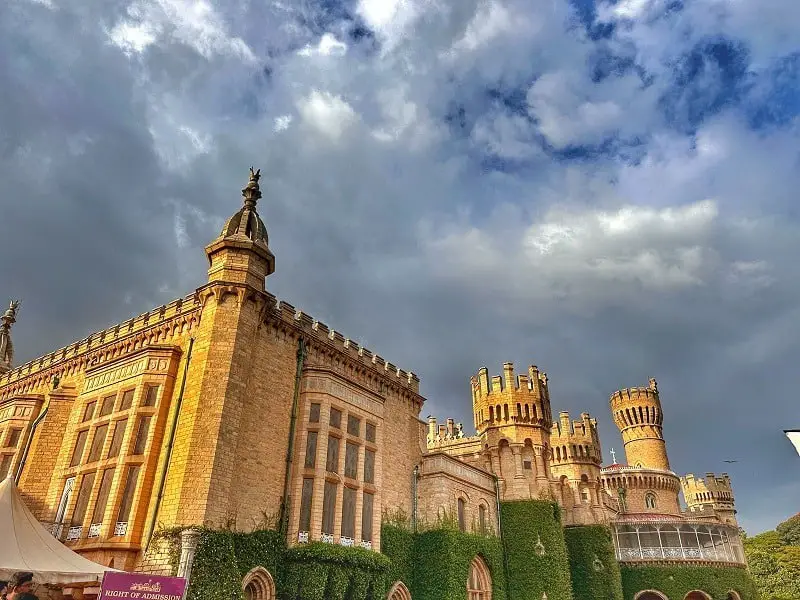
Bangalore is also a hub for technology and innovation, earning it the title of India’s Silicon Valley. This comparison of ancient heritage with cutting-edge modernity creates a unique cultural landscape where history and the future coexist harmoniously. Bangalore’s culture continues to thrive as a dynamic reflection of its people.
Where is Bangalore located?
Bengaluru is located in Karnataka, in the southern part of India. It sits on the Deccan Plateau, which covers most of South India. Geographically, Bangalore lies at an average elevation of about 900 metres (3,000 feet) above sea level, making it one of the highest major cities in India. This elevation plays a significant role in shaping the city’s pleasant climate.
The city’s position on the plateau gives it a distinct advantage regarding weather. Unlike many other cities in India that experience extreme temperatures, Bangalore enjoys a moderate and mild climate throughout the year. The elevation ensures cooler temperatures, especially in the evenings, even during the summer when other regions experience scorching heat. This makes Bangalore a popular destination for those seeking relief from the rest of the country’s tropical climate.
Bangalore’s location also influences its seasonal rainfall. The city receives primary rainfall during the monsoon season, but the weather remains comfortable. The cool breeze, moderate temperatures, and frequent light showers contribute to its reputation as the “Garden City” of India, with lush green parks and gardens thriving throughout the year. Its elevation and surrounding geography give Bangalore desirable weather, making it a comfortable place to live and explore year-round.
How Did Bengaluru Get Its Name?
Bengaluru, previously called Bangalore, is steeped in folklore and historical references. One of the most well-known legends dates back to the 12th century, involving King Veera Ballala II of the Hoysala dynasty. The king lost his way in a dense forest during a hunting expedition. Tired and hungry, he came across an old woman who graciously offered him a meal of boiled beans. In gratitude, the king named the area “Benda-Kaal-uru,” meaning “town of boiled beans” in Kannada. Over time, this evolved into Bengaluru.
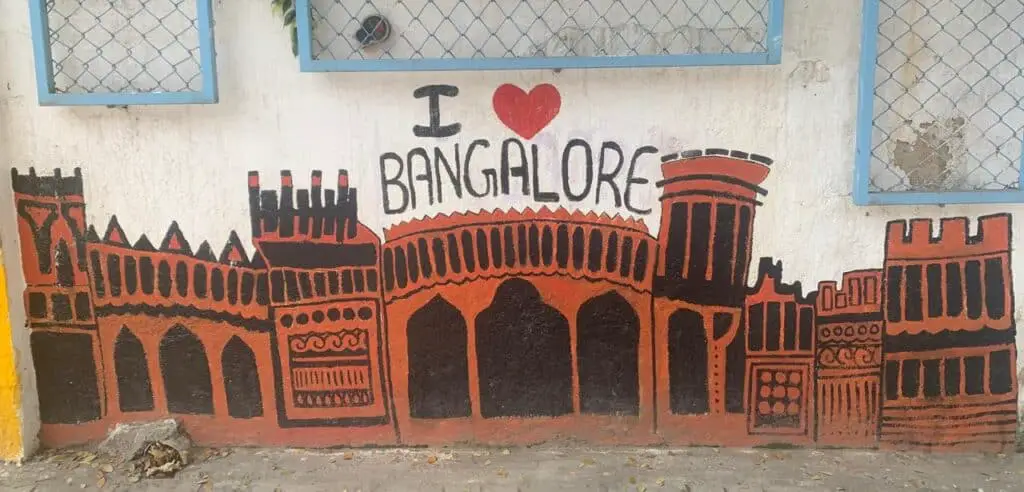
While this story is widely recounted, it is folklore, and other facts exist regarding the city’s name.
Inscription found at Begur
An inscription dating back to 890 CE, discovered by Narasimhachar at the Sri Panchalingeshwara Temple in Begur, provides one of the earliest records of Bengaluru’s existence. This stone inscription, known as a veera kallu (hero stone), celebrates the bravery of warriors and refers to the “Battle of Bengalooru.”
The inscription commemorates the heroic deaths of Pervvonashetti and Buttanapati, sons of Nagatara, who lost their lives in this battle. Interestingly, the term manĕvagati is used for Pervvonashetti and vagati for Buttanapati, distinguishing the adopted son from the biological one.

Benga meaning Guard
Historical records also support the theory that the word “Benga” could mean guard, pointing to a more military-oriented origin of the name. This evidence highlights the city’s long-standing importance as a centre of defence and governance during the Ganga Dynasty, further cementing Bengaluru’s historical place as a cultural and strategic hub.
Benga Trees
Another interpretation suggests that Bengaluru might have been named after the abundance of Benga trees (also known as the Indian Kino Tree) that once grew in the area.
Bangalore and Bengaluru
“Bangalore” is an anglicised version of the city’s original name in Kannada, “Bengaluru.”
In 2006, the city’s official name was changed from Bangalore to Bengaluru to reflect the local Kannada pronunciation and heritage accurately. The change was part of a broader movement in India to rename cities to their original, indigenous names, embracing their local history and culture.
Bengaluru is known for its historical roots and as a modern technology and innovation hub. Yet, the city’s name reminds us of its ancient past, whether through folklore or historical references, connecting modern Bengaluru with its rich cultural heritage.
History of Bangalore/Bengaluru
Bangalore, now known as Bengaluru, has a rich history that spans centuries. It is believed that the city has more than 4000 years of history. Stone implements have been found that go back to that date.
Old Stone Age
Bangalore‘s origins trace back to 4,000 BC, during the Old Stone Age, as evidenced by stone implements discovered at Jalahalli, Sidhapura, and Jadigenahalli, now on the city’s outskirts.
The Old Stone Age, or Paleolithic Era, is characterised by the development of the first stone tools by early humans, who were primarily hunter-gatherers. These early inhabitants relied on simple, unrefined tools for survival, including hand axes and scrapers, which allowed them to hunt animals and process food.
Bengaluru Prayana offers guided heritage and cultural walks across the city, exploring its history, culture, and hidden stories. Join our scheduled walks or request a customised experience tailored to your interests.
To learn about the scheduled walks, visit the Bengaluru Prayana Facebook Group or Instagram Page. Alternatively, you can write to us at bengaluruprayana@gmail.com.
You can also join our WhatsApp community.
The discovery of these tools in Bangalore highlights the region’s long history of human activity. It suggests that it has been inhabited for thousands of years, marking the beginnings of what would eventually evolve into the modern city of Bangalore.
Burial Grounds (1000 BC)
Burial grounds have been uncovered in Koramangala and Chikkajala, indicating the area’s long-standing historical significance. Prehistoric sites dating back to around 1000 BC have been discovered near Anekal and Tabaranahalli. These findings suggest that the region has been inhabited for thousands of years, showcasing Bangalore‘s rich cultural and historical tapestry. The burial sites in Koramangala and Chikkajala offer valuable insights into the burial practices and lifestyles of the ancient communities that once thrived in this area.
Meanwhile, the prehistoric sites near Anekal and Tabaranahalli provide evidence of early human activity, highlighting their significance in understanding the region’s early inhabitants. These discoveries contribute to a deeper appreciation of Bangalore‘s historical roots and development over the millennia, establishing it as a significant site for archaeological and historical research.
Roman Coins
While excavating the Krishna Rajendra (KR) Market metro station in Bangalore, archaeologists discovered a collection of Roman coins. These coins are believed to date back to the period of active trade between the Roman Empire and South India, highlighting the historical significance of Bangalore as part of ancient trade routes. The find provides evidence that the region, even in ancient times, was connected to international commerce, offering a rare glimpse into the economic and cultural exchanges that took place over 1,500 years ago.
Hebbal Kittayya Inscription
Another fascinating inscription, dating back to 750 CE, was discovered in Hebbal. It commemorates Kittayya, a local hero who defended the region from a Rashtrakuta invasion. He is often regarded as Bengaluru’s first known resident, earning him the title of the city’s earliest citizen.
The Hebbal-Kittayya inscription is the oldest intact Kannada inscription found in Bengaluru. The hero stone features a striking battle scene, two warriors locked in combat. One figure stands tall, holding a bow in one hand and a knife in the other, his body pierced with spears or arrows. Facing him is a horse-mounted warrior, captured in an unusual stance, kneeling on the horse’s back instead of sitting astride, spear poised to strike.
The carving of the standing man reflects remarkable grace and perfect proportions. At the same time, the depiction of the horse and rider appears distorted and disproportionate, offering a glimpse into early artistic styles of the period.
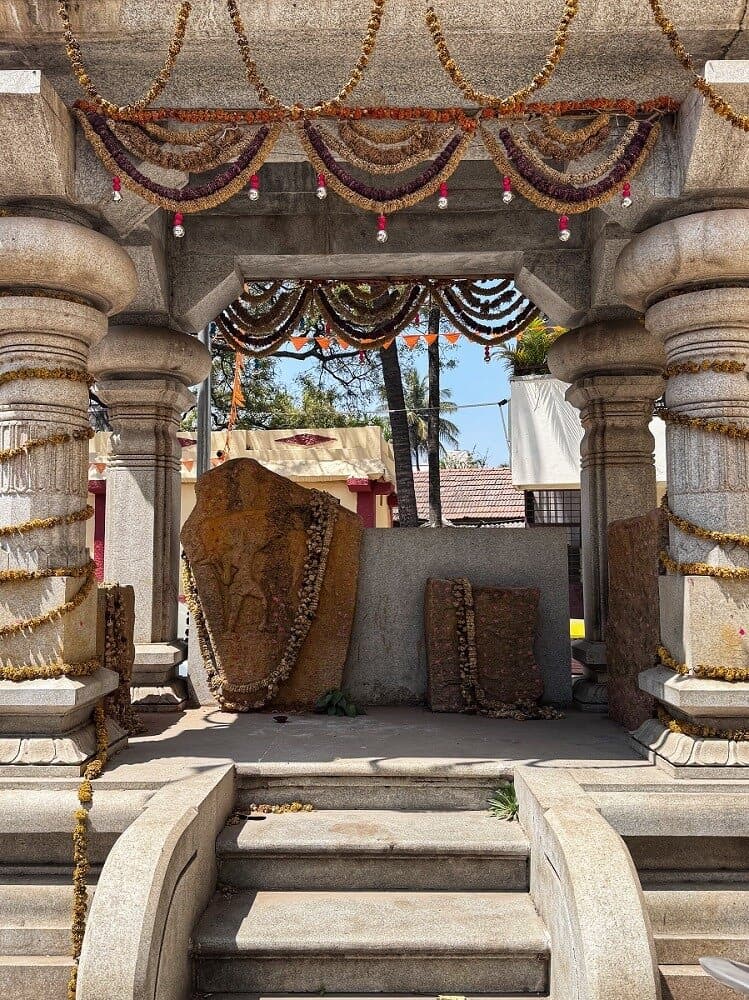
Inscription of Bengalooru (890 CE)
An 890 CE inscription, uncovered by Narasimhachar at the Sri Panchalingeshwara Temple in Begur, provides one of the earliest documented mentions of Bengaluru. This Veera Kallu (hero stone) honours warriors who displayed exceptional bravery and references the historic “Battle of Bengalooru,” offering valuable insight into the region’s early military history.
The inscription commemorates the deaths of Pervvonashetti and Buttanapati, sons of Nagatara, who fell in this battle. Interestingly, the text distinguishes between them: Pervvonashetti is called manevagati, indicating he was adopted, while Buttanapati is referred to as vagati, marking him as the biological son. This detail provides a rare glimpse into family structures and social distinctions in 9th-century Bengaluru, enriching our understanding of the city’s early communities and traditions.
Kempe Gowda (16th Century)
The modern city of Bengaluru was founded in 1537 by Kempe Gowda I, a chieftain under the Vijayanagara Empire. He established a mud fort, marking the city’s formal inception. Kempe Gowda’s leadership and vision were instrumental in defining the city’s layout, taking advantage of its strategic location and mild climate.
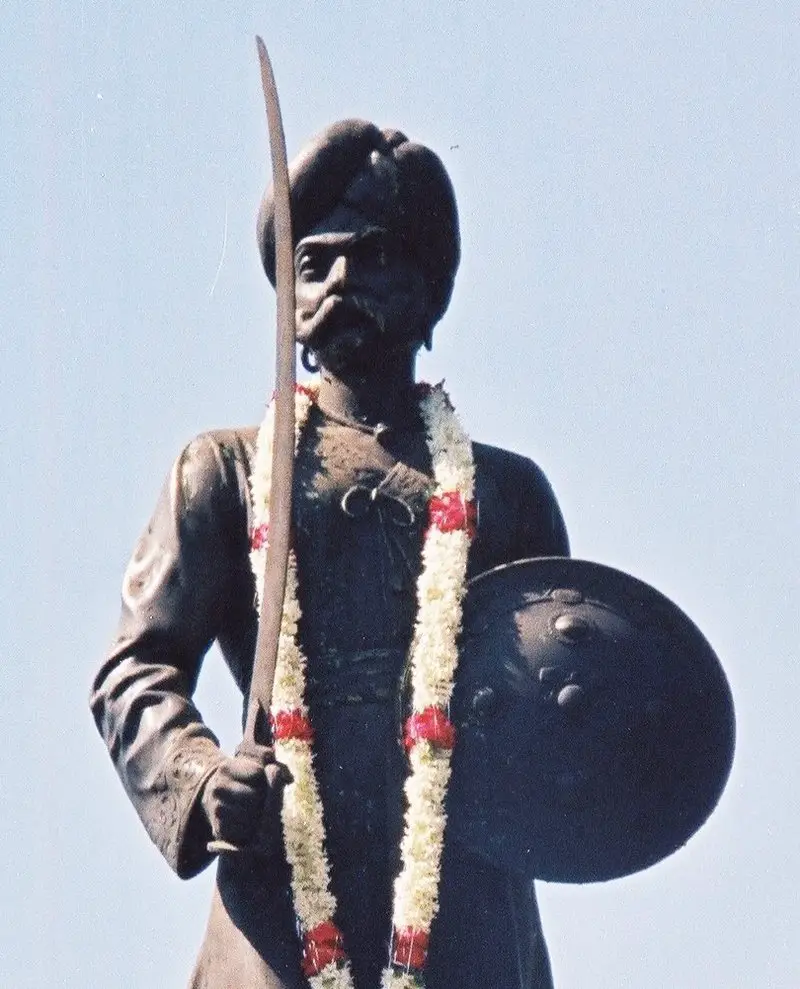
Before Kempegowda’s time, various South Indian dynasties, including the Western Gangas, Cholas, and Hoysalas, influenced the region. While ruling from Yelahanka, Kempe Gowda then established the mud fort at Pete area, which is considered the foundation of modern Bengaluru.
Kempe Gowda planned the city with distinct streets for different trades, fostering economic activity. Chickpet served smaller enterprises, while Doddapete catered to larger businesses, with various markets, or “petes,” emerging for specific goods. Notable markets included Akkipete for rice, Balepete for bangles, and Kumbarapete for pottery.
Kempe Gowda I referred to his new town at Pete as “Gandu Bhoomi” or “Land of Heroes.” His successor, Kempe Gowda II, expanded the city and established the famous jurisdiction/boundary towers at Mekhri Circle, Lalbagh, Gavipuram, and Ulsoor, further solidifying Bengaluru’s identity. During the Vijayanagara rule, it was also known as “Devarayanagara” and “Kalyanapura,” meaning “Auspicious City.”
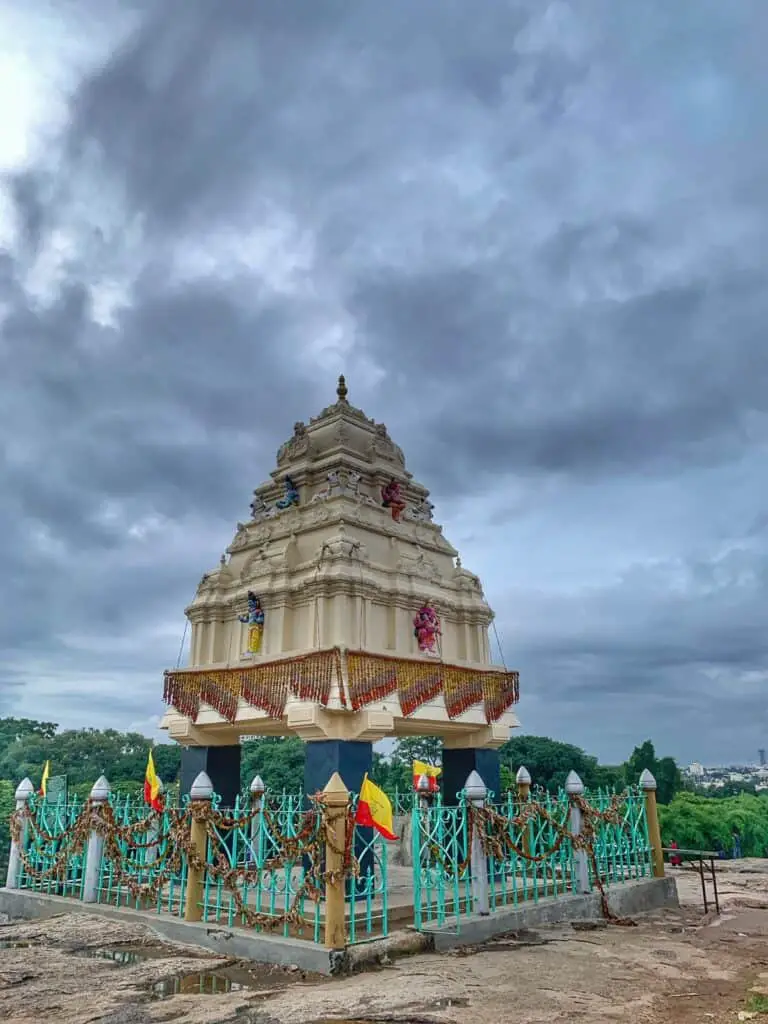
Marathas (17th Century)
In the 17th century, the Marathas took control of the region, with Shahaji Bhosle, a leader of the Maratha Empire, seizing Bangalore in 1638. He entrusted the city to his second son, Venkoji, while giving Maharashtra to his elder son, Shivaji. The Marathas ruled Bangalore for nearly 50 years until Venkoji moved to Thanjavur.
In addition to these historical transitions, an inscription found at the Kadu Malleshwara Temple in Malleshwaram further supports the region’s rich Maratha narrative.

Wodeyars
Before heading to Tanjavur, Venkoji considered selling Bengaluru to the Wadiyars. However, Qasim Khan, a Mughal general sent by Emperor Aurangzeb, captured the city from Venkoji and sold it to Chikka Deva Raja Wodeyar for three lakh rupees. Under the Wodeyars, the Bangalore Fort was fortified, and later, Hyder Ali strengthened it further by constructing the stone fort.
Hyder Ali (18th Century)
Hyder Ali rose to power through a combination of military skill and political strategy, taking advantage of the declining influence of the Wodeyar dynasty in Mysore. Beginning his career as a soldier, he rapidly advanced to the position of commander-in-chief. By 1761, he had sidelined the existing ministers and established himself as the de facto ruler, later gaining formal recognition as the sovereign of the Sultanate of Mysore.
Tipu Sultan (18th Century)
Tipu Sultan, also known as the Tiger of Mysore, was the son of Hyder Ali, the ruler of the Sultanate of Mysore. He became the ruler after his father died in 1782 and is remembered as a skilled military leader, an innovator, and a strong opponent of British expansion in India.
Tipu Sultan modernised his army, introduced new weapons, and used rockets in warfare, which were among the earliest forms of iron-cased rockets used in battles. He fought several wars against the British East India Company, most notably the four Anglo-Mysore Wars, striving to protect his kingdom’s independence.
Apart from his military achievements, Tipu was also a patron of trade, agriculture, and technology. He established state-controlled factories, encouraged trade with foreign nations, and introduced new crops and irrigation systems in Mysore.
Tipu Sultan died in 1799 defending Srirangapatna during the Fourth Anglo-Mysore War. His legacy lives on in Indian history as a symbol of resistance against colonial rule and as a ruler who combined military strategy with administrative foresight.
British Rule (19th and 20th Centuries)
After the British defeated Tipu Sultan, they assassinated him and assumed control of Bengaluru. Seringapatanam or Srirangapatnam became the garrison town of the British.
In 1806, the British shifted their cantonment to Bangalore, prompting a new town to grow around it under British governance. Bengaluru emerged as a key military cantonment and an important administrative centre during British rule. The city’s temperate climate attracted many British officials, leading to the establishment of the “Cantonment” area, distinct from the older “Pete” area built by Kempe Gowda. This division laid the foundation for Bengaluru’s rapid growth in the 19th and 20th centuries.
The British returned administrative authority to the Maharaja of Mysore, and Srirangapatna became the capital of the Princely State of Mysore, a nominally sovereign entity within the British Raj.
Bangalore remained under British rule for more than 150 years until India gained independence in 1947.
Post-Independence Bengaluru
In 1949, the two urban settlements, the city and the cantonment, merged to form a single urban centre. Following India’s independence in 1947 and the establishment of the new Indian state of Karnataka in 1956, Bengaluru solidified its status as the state capital, further enhancing its importance as a major city in India.
Post-independence, Bengaluru underwent significant transformations. The Vidhana Soudha, completed in 1954, now serves as the seat of Karnataka’s state legislature. The city grew, with neighbourhoods such as Kumara Park, Sadashivnagar, and Jayanagar emerging. These areas are now popular public attractions and essential destinations in Bengaluru, reflecting the city’s dynamic evolution from its colonial past to a modern urban centre. Today, Bengaluru is known for its historical significance, vibrant culture, and thriving technology industry, making it a key player in India’s growth story.

Information Technology (IT) Boom in Bengaluru
Bengaluru, often called the “Silicon Valley of India,” has a rich history of technological development that catalysed its transformation into a global IT hub. The roots of Bengaluru’s IT boom can be traced back to the 1980s when the Indian government began to liberalise the economy and promote the technology sector.
In 1984, the government established the Electronics City, which attracted many technology companies. This initiative was instrumental in laying the groundwork for the IT industry. The establishment of institutions like the Indian Institute of Management Bangalore (IIMB) and the Indian Institute of Science (IISc) further contributed to the growth of a skilled workforce.
The 1991 economic liberalisation marked a significant turning point, opening the Indian economy to foreign investments. Bengaluru became a preferred destination for multinational corporations seeking to establish software development and outsourcing operations. Companies like Infosys and Wipro were founded during this period and played crucial roles in shaping the city’s IT landscape.
By the late 1990s and early 2000s, Bengaluru saw an explosion of IT parks and technology firms, attracting talent nationwide. The city became known for its vibrant startup ecosystem, with numerous incubators and accelerators emerging to support budding entrepreneurs.
Today, Bengaluru is home to over 1,000 tech startups and major offices of global giants like Google, Microsoft, and Amazon. The city continues to innovate and evolve, solidifying its position as a global technology leader while contributing significantly to India’s economy.
Closing Notes
The history of Bangalore, or Bengaluru, is rich with tales of ancient kingdoms, strategic significance, and transformative growth. From its origins as a modest settlement in the 9th century, referenced in stone inscriptions, to its establishment as a fortified city by Kempe Gowda in the 16th century, the city has evolved significantly over the centuries. The influence of various dynasties, including the Wadiyars and the Marathas, shaped its cultural landscape, while British rule turned it into a crucial military cantonment and administrative centre.
The post-independence era marked a new chapter for Bengaluru, particularly with the rise of the IT industry in the late 20th century. Today, India’s leading technology hub is known globally as the “Silicon Valley of India.” This remarkable transformation reflects the city’s adaptability and ability to embrace innovation while retaining its rich heritage. As Bengaluru continues to grow and evolve, it remains a city that honours its past, cherishing the blend of history and modernity that defines its unique character. The journey of Bangalore is an example of its resilience and a reminder of its importance as a vibrant urban centre in India.
How Can You Support Me?
You know I love coffee, so you can buy me a coffee – Buy Me Coffee!
If you enjoyed and liked this article, comment, tweet, and share this post.
Do you have a question or a suggestion? Or want to know more information? Write to me at bengaluruprayana@gmail.com.
Subscribe to My Newsletter
PIN for later reference – History of Bangalore
